Ozgur Coskun/iStock/GettyImages
The Incas were likely the first people to make jerky, and although we still use their same basic methods today, we've introduced new ingredients like barbecue sauce. Barbecue sauces are safe to use in marinades, and when used properly, those sweet tomato and smoky flavors might just make your jerky the best you've ever had.
Select Your Sauce
The type and flavor of barbecue sauce used is completely up to you, but take note of the other ingredients in the jerky recipe. If it already includes a couple of sweet ingredients, like honey and molasses, try balancing that sugar flavor with a smokier, spicier barbecue sauce. The type of meat shouldn't really influence your flavor selection. Whether it's turkey, rabbit or venison jerky, go with the barbecue flavors you enjoy.
Making Your Marinade
Before adding the barbecue sauce, take a look at the other ingredients and how much of each you’ll use. Soy sauce should take up half of your liquid ingredients, and if you’re also including sweeteners and alcohol, you should only need about 2 tablespoons of barbecue sauce per pound of meat. For more barbecue flavor, remove half of the sweetener in the recipe and add an equal amount of barbecue sauce.
Method
Brush the slices with the barbecue sauce and then place them in a re-sealable bag with the other liquid ingredients and any dry ones, such as salt, pepper and spices. Seal the bag and then massage it to ensure each slice of meat is covered in the marinade. Leave it in your refrigerator for up to two days. Before drying, bake the slices in an oven preheated to 250 degrees Fahrenheit until the internal temperature reaches at least 160 degrees Fahrenheit for venison, rabbit or beef and 165 degrees Fahrenheit for poultry. You can then dry the slices in a dehydrator or an oven at about 175 degrees Fahrenheit. The jerky will be done when it just begins to blacken, which can sometimes take more than 10 hours.
Safety Notes
Barbecue sauce and other liquid ingredients add moisture to the curing process, which, in turn, can increase the number of pathogenic bacteria in the finished jerky. You can avoid these harmful bacteria by baking the slices until they reach at least 160 degrees Fahrenheit for venison, rabbit and beef and 165 degrees Fahrenheit for poultry — the temperatures at which bacteria are destroyed.
Related Articles
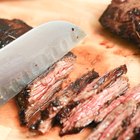
How to Marinate Steak

How to Inject a Brisket

What Can You Do With London Broil Steak?

How to Cook Barbecue Deer in the Slow ...

Perfect Way to Cook a Pork Chop in the ...

How to Bake Moist Tender Sliced Pork ...

How to Salt Cure Jerky

How to Cook Venison With Tomatoes in a ...
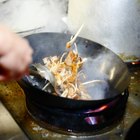
Can You Make a Reduction Sauce From ...

How to Make Jalapeno Beef Jerky

How to Cook Beef Teriyaki Jerky in a ...

Liquid Smoke Ingredients
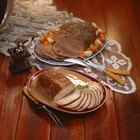
How to Tell the Grain of Meats
Easy Pork Chop Marinade Recipe

How to Keep Pineapple From Browning
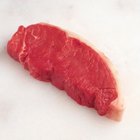
How to Slice a Roast for Jerky
How Long Can You Marinate Meat Before ...

How to Know if Beef Cubes Are Bad
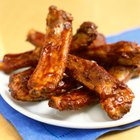
How to Bake Spare Ribs Before BBQing
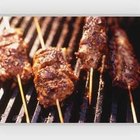
How to Marinate a Steak with Cola
References
Writer Bio
Based in Halifax, Nova Scotia, Jordan Whitehouse has been writing on food and drink, small business, and community development since 2004. His work has appeared in a wide range of online and print publications across Canada, including Atlantic Business Magazine, The Grid and Halifax Magazine. Whitehouse studied English literature and psychology at Queen's University, and book and magazine publishing at Centennial College.